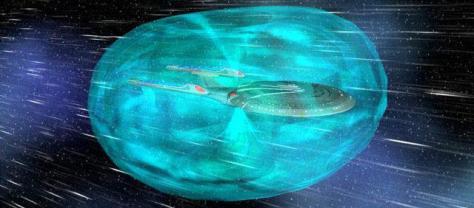N/B: For a related note, see Dare to Dream 1
“Seeing the stars streaking past in such dizzying arrays… is simultaneously the most exhilarating and the most humbling experience… ever…”
Those were the standard sentiments from any Team Epsilon Cosmonaut, upon completing the first deep space round trip. In this simple sentiment, lay fundamental, paradigm-shifting feelings of pride and hope at just how far the explorers had come. From the days of the internal combustion engine, to the days of nuclear fission and, much later, to the days of cold nuclear fusion, space propulsion had always rent a palpable edge to us, the explorers. The need to explore the cosmos… to comprehend the vastness out there, had driven innovation into ever more efficient propulsion systems for deep space.
Ultimately, we hit upon the holy grail of propulsion: the anti-matter space engine. And with this innovation, we became, for all practical purposes, space gods.
The anti-matter space engine started off, quite surprisingly, as an offset of an even greater human endeavor – the search for the Higgs boson, also referred to as the God-particle. In the search for this boson, several gigantic particles colliders had been built, including the Tevatron, the Hadron, and the Clymedin collider. Each subsequent collider had boasted even larger particle loads, of which only a very small percentage was actually used in the final search for the Higgs boson. It was then that Team Gamma – the cosmology team preceding us – hit upon the idea of collecting antimatter byproducts from all those colliders.
Several monstrous Penning Traps were constructed on site for each of the particle colliders. The Penning traps operated by filtering out only antimatter particles – mostly positrons and anti-protons – and suspending them in vacuums so that that they didn’t interact with any normal matter. Magnetic and electric fields within the traps ensured that the antimatter remained in suspension, trapped by well synchronized axial and radial waves from the two fields. By combining the output from all the colliders, Team Gamma was able to harvest, reliably, approximately 100 Kilograms of antimatter every year.
Our cosmology team, team Epsilon, was credited with creating the anti-matter engine. This engine operated by allowing the antimatter, stored in smaller Penning traps within the space ships, to interact with normal matter. The matter-anti-matter annihilation that took place produced energy in excess of 300 times what any nuclear fusion system could produce, and more than 10 billion times what any chemical reaction could produce. Team Epsilon, in short, harnessed Einstein’s equation for mass and energy. The resultant, stratospheric fuel-thrust conversion ratio produced a specific-thrust enough to send a payload exceeding 900 TerraKgs round the entire Milk Way Galaxy on only 3 Kilograms of antimatter fuel.
In order to actually utilize the new propulsion system, there were some attendant costs. We had to bear up with extreme astro-dynamic stresses. In each mission, all cosmonauts aboard, and the rest of the payload, would become projectiles – sent at double-digit percentiles of C – the speed of light. The g forces involved were enormous and, like most of my colleagues, I fainted on several of the first such missions. But, as proven thousands of times before, the human body is highly versatile, and in due time, our bodies started adapting to the incredible g forces we were experiencing. In time, we came to bear as much as 15 g during the acceleration phase – forces that, to an untrained person, would certainly have been fatal.
Team Epsilon started its deep space explorations by aiming for a region of space known then as the Echi-Niche region – 2.1 Light years away from the solar system. We reached the region in 5 years earth time. Our chronographs, however, showed that only 3 years had passed aboard the ship – a testament to time dilation as we approached the speed of light in our transit. The Echi-Niche region proved to have exactly what we had hoped for – vast amounts of anti-matter deposits. We replenished our fuel within the Penning traps, and headed back home with the good news.
Within two decades of the first space mission propelled with antimatter, numerous other missions were undertaken by Team Epsilon. Some missions specifically targeted the Echi-Niche region, since it had quickly become clear that mining that deep-space deposit was cheaper than harvesting antimatter within the colliders on earth. But other missions targeted other deep space artifacts. We soon demystified dark matter and dark energy, for instance. We initiated a project to terraform Alpha-Centauri – one of our neighboring stars. And we even sent a probe to the center of the Milky Way galaxy. It’s still on transit, and its fuel reserves are more than enough for the journey.
….So many parsecs travelled… so many star systems flown by… and yet, so much more to be explored. Yes indeed, the universe is huge. So huge that, even with our best instruments, we can only catch, and fathom, a tiny, miniscule fraction of what actually lies in deep space. The actual volume explored during our space missions is even smaller – a microsphere of a micron of the universe. But we remain undeterred – remain focused on doing the best we can at exploring this near-infinite void. Whatever we shall accomplish, subsequent generations will build up on. But our mark, our legend… our footprints in space, will be discernible forever.
… Dare to dream…


You sure are a dreamer
LikeLike
I totally am, Noel. 🙂
LikeLike